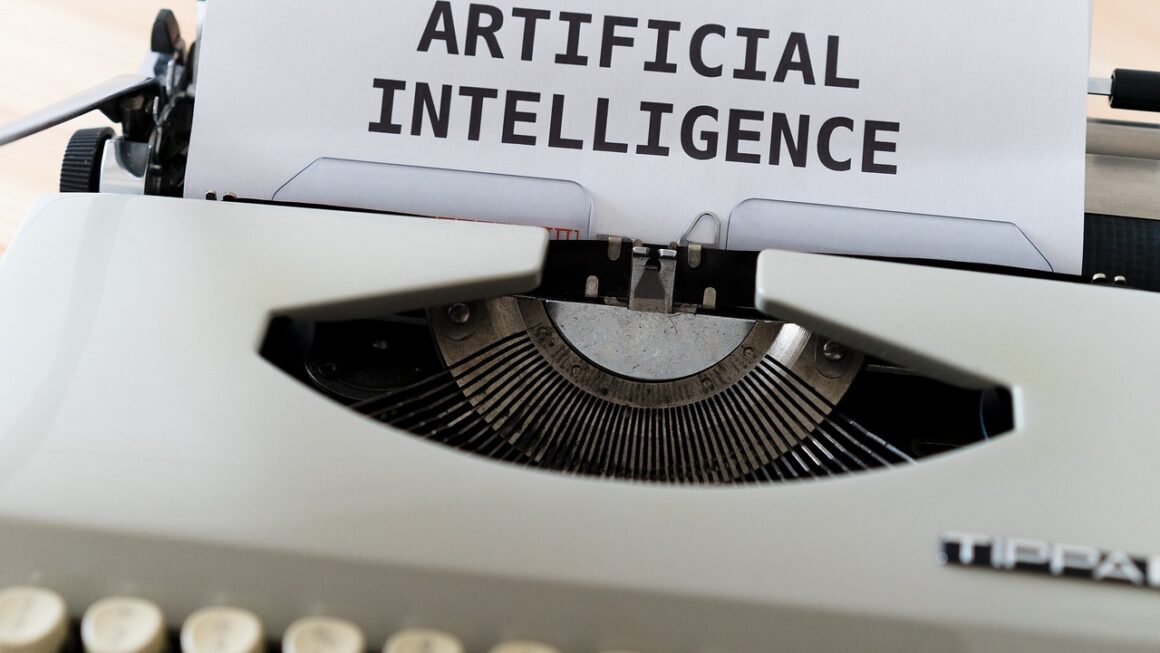The energy sector is undergoing a massive transformation, driven by the need for greater efficiency, sustainability, and resilience. Artificial intelligence (AI) is emerging as a powerful tool to navigate this complex landscape, offering solutions to optimize energy production, distribution, and consumption. From predicting energy demand to optimizing grid operations and enabling renewable energy integration, AI is revolutionizing the way we power the world. This blog post delves into the multifaceted applications of AI in energy and explores the exciting possibilities it unlocks for a cleaner and more efficient energy future.
Optimizing Energy Production with AI
Predictive Maintenance for Energy Infrastructure
One of the most impactful applications of AI in energy production lies in predictive maintenance. By analyzing sensor data from power plants, wind turbines, and solar farms, AI algorithms can identify patterns and anomalies that indicate potential equipment failures. This allows for proactive maintenance, preventing costly downtime and extending the lifespan of critical assets.
- Benefits of Predictive Maintenance:
- Reduced maintenance costs
- Minimized equipment downtime
- Improved asset lifespan
- Enhanced safety
Example: A major oil and gas company uses AI-powered predictive maintenance on its offshore platforms. By analyzing vibration data from pumps and compressors, the AI system can detect early signs of wear and tear, triggering maintenance alerts before a catastrophic failure occurs. This has resulted in a significant reduction in unplanned downtime and maintenance expenses.
Enhancing Resource Exploration and Extraction
AI is also proving invaluable in resource exploration and extraction. Machine learning algorithms can analyze geological data, seismic surveys, and satellite imagery to identify promising locations for oil, gas, and mineral deposits. Furthermore, AI can optimize drilling operations, reducing costs and environmental impact.
- AI Applications in Resource Exploration:
- Improved accuracy in identifying potential resource locations
- Optimized drilling parameters
- Reduced environmental impact
- Faster exploration cycles
Example: An AI-powered system is used to analyze seismic data to identify unconventional oil and gas reserves. The system uses deep learning to automatically interpret complex geological structures, helping geologists pinpoint the most promising drilling locations with greater accuracy.
Smart Grids and AI-Powered Energy Management
Demand Forecasting and Load Balancing
AI is crucial for managing the complexities of modern energy grids. AI algorithms can analyze historical data, weather patterns, and real-time usage to accurately forecast energy demand. This enables grid operators to optimize energy generation and distribution, ensuring a stable and reliable power supply.
- Benefits of AI-Powered Demand Forecasting:
- Improved grid stability
- Reduced energy waste
- Optimized energy procurement
- Better integration of renewable energy sources
Example: A utility company uses an AI-based demand forecasting system that predicts energy consumption patterns based on weather forecasts, time of day, and historical data. This allows them to adjust energy generation levels to meet demand efficiently, reducing the need to rely on expensive peak power plants.
Optimizing Grid Operations and Distribution
AI can optimize grid operations by automatically adjusting voltage levels, routing power flows, and detecting faults. This improves grid efficiency, reduces losses, and enhances resilience to outages.
- AI-Driven Grid Optimization Features:
- Automated voltage control
- Intelligent fault detection and isolation
- Dynamic power routing
- Enhanced grid security
Example: An energy company uses an AI-powered system to optimize the distribution of power across its grid. The system continuously monitors grid conditions and automatically adjusts transformer settings to minimize losses and ensure that all customers receive a stable power supply. This system has led to a significant reduction in energy waste and improved grid reliability.
Enabling Renewable Energy Integration
Forecasting Renewable Energy Generation
The intermittent nature of renewable energy sources like solar and wind poses a significant challenge for grid management. AI plays a crucial role in forecasting renewable energy generation, allowing grid operators to anticipate fluctuations and adjust energy supply accordingly.
- AI Capabilities for Renewable Energy Forecasting:
- Accurate prediction of solar irradiance and wind speed
- Improved integration of renewable energy into the grid
- Reduced reliance on fossil fuels
- Enhanced grid stability
Example: A solar farm uses an AI-powered forecasting system that combines weather data, satellite imagery, and historical performance data to predict its electricity output over the next few hours. This enables the grid operator to plan for fluctuations in solar generation and adjust other energy sources accordingly.
Optimizing Energy Storage Systems
Energy storage systems, such as batteries and pumped hydro, are essential for smoothing out the variability of renewable energy sources. AI can optimize the charging and discharging of energy storage systems to maximize their efficiency and effectiveness.
- AI for Energy Storage Optimization:
- Intelligent charging and discharging schedules
- Extended battery lifespan
- Maximized energy storage capacity
- Improved grid stability
Example: A grid-scale battery storage system uses an AI algorithm to optimize its charging and discharging schedule based on real-time electricity prices, weather forecasts, and grid conditions. This allows the system to maximize its profits by buying electricity when prices are low and selling it when prices are high, while also providing valuable grid stabilization services.
Smart Homes and Energy Efficiency
Personalized Energy Management
AI is empowering consumers to manage their energy consumption more effectively. Smart thermostats, smart appliances, and energy monitoring systems use AI to learn user preferences and optimize energy usage automatically.
- AI-Powered Smart Home Features:
- Automated thermostat adjustments
- Smart appliance scheduling
- Real-time energy consumption monitoring
- Personalized energy saving recommendations
Example: A smart thermostat uses AI to learn a homeowner’s heating and cooling preferences. Based on this information, the thermostat automatically adjusts the temperature settings to maximize comfort and minimize energy consumption, resulting in significant energy savings.
Predictive Maintenance for Home Energy Systems
AI can also be used to predict and prevent failures in home energy systems, such as solar panels and heat pumps. By analyzing sensor data and historical performance, AI algorithms can identify potential problems before they lead to costly repairs.
- Benefits of AI in Home Energy System Maintenance:
- Reduced maintenance costs
- Extended system lifespan
- Improved energy efficiency
- Enhanced safety
Example: A solar panel monitoring system uses AI to analyze the performance of individual panels. The system can detect panels that are underperforming or have been damaged, alerting the homeowner to potential problems and preventing further damage.
Conclusion
AI is poised to revolutionize the energy sector, offering solutions to optimize every stage of the energy value chain, from production to consumption. By embracing AI, energy companies can improve efficiency, reduce costs, enhance reliability, and accelerate the transition to a cleaner and more sustainable energy future. As AI technology continues to advance, its impact on the energy sector will only grow stronger, shaping the way we power our world for generations to come. The intelligent management of energy resources through AI will lead to greater efficiency, sustainability, and resilience in the face of evolving energy demands and climate challenges.




